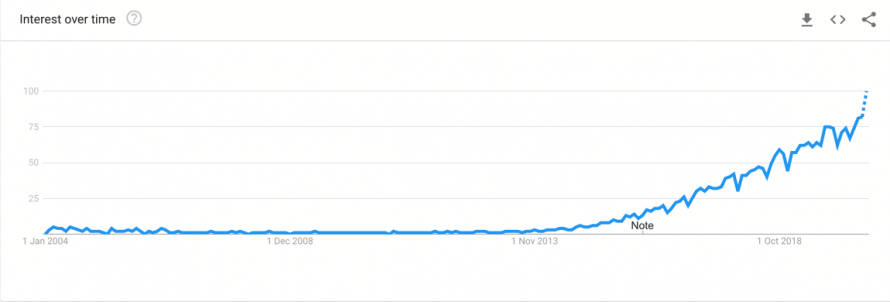Digital Transformation and its difference from IT-enabled Transformation – New research

Understanding how to differentiate between digital transformation and IT enabled organisational transformation is more than just semantics. New research not only shows what the difference is, but also what knowing what the difference is can save an organisation a lot of trouble.
The idea of digital transformation
The idea has grown in both importance for organisations and in terms of research interest since 2013, with almost 4 million peer-reviewed research papers being published about the topic and almost 30,000 research papers being published in just the first six months of 2020.

Previous studies
Previous to 2013, when the idea of digital transformation really started to take hold within organisations and the research fields, Information Systems and IT enabled organisational transformation started to emerge in the 1990s from studies about the transformational impact that computers and IT systems was starting to have on organisations.
Listen to the podcast with the researchers here:
Podcast – Digital and IT Enabled Organisational Transformation – know the difference
The Question
The question is in what way is digital transformation different from IT enabled organisational transformation, and does it make a difference?
A new study
A new (2020) large-scale technical review has just been published. It looked at the current organisational practices in terms of IT organisational transformation and digital transformation and was conducted by a team of researchers from the University of Bremen in Germany, the Copenhagen Business School at the University of Digitisation in Denmark, the University of Montpelier in France and the Westminster Business School at the University of Westminster in the United Kingdom.
The study comprised both a thorough review of research, a meta-analysis and two longitudinal case studies:
• The first of a large-scale organisational digital transformation project
• The second of a large-scale IT enabled organisational transformation project

Findings
The study found that there were a series of similarities and overlaps between digital transformation projects and IT enabled organisational transformation projects. In particular, the researchers found that the drivers for both types of project were primarily the same, in that:
- Technological change and the environmental context, such as market, political, scientific, social, legal changes, has a direct impact on the organisational context, which then drives the transformation agenda.
- The transformation agenda creates pressure on the organisation to examine its existing organisational identity and start to examine and define a new identity, or reinforce their existing identity, in the face of environmental and technological change and that this agenda moves the organisation into a series of transformation activities using digital and IT technology.
Whether or not an organisation then engages in digital transformation or IT enabled organisational transformation depends largely on how the organisation perceives itself, its activities, and its use of new digital and IT technologies.
If the organisation:
- Perceives that emerging and new digital technologies are going to define its value proposition what then tends to occur is a change in organisational identity, aims and goals. This is normally referred to as digital transformation.
- Believes that the emerging and new digital technologies support its existing value proposition it will then most likely engage in IT enabled organisational transformation in a way that reinforces its organisational identity, aims and goals.

More Findings
The study found that this is an ongoing iterative process where the organisation’s value proposition imposes or defines changes in working practices within organisations. This in turn refines and re-evaluates the emerging digital technologies in terms of the organisation’s value proposition. If new technology or competitive pressure supports a new value proposition then the organisation is very likely to engage in digital transformation, however, if the emerging digital technologies appear to support the organisation’s value propositions it is significantly more likely to engage in IT enabled change.
The difference
What this means in brief is that digital transformation involves a change in both the organisation’s value proposition and a redefining of its organisational identity. IT enabled transformation, on the other hand, sees emerging digital technologies as a mechanism of supporting the organisation’s existing value proposition and using these technologies to reinforce and consolidate the organisation’s identity.
Reference
Be impressively well informed

Get the very latest research intelligence briefings, video research briefings, infographics and more sent direct to you as they are published
Be the most impressively well-informed and up-to-date person around...
